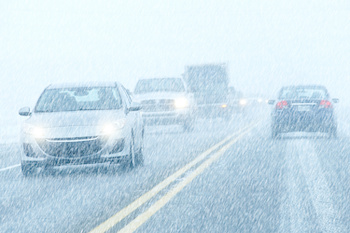Getting your vehicle ready for winter is very important as there are certain situations that you can face that are not a concern during most of the year. Being prepared can literally mean the difference between life and death if the worst of the scenarios were to occur. Use the steps below to ensure that you are prepared for whatever may come your way.
The first step is to ensure that your vehicle is in the best possible shape. It is ideal to fill all fluids and change those that are due to be replaced. This will lower the chances that your vehicle will face mechanical issues when it is put through the stresses of low temperatures.
One of the most important fluids to fill is the anti-freeze. If your reservoir is empty you will want to fill through the mainline. To do this make sure your vehicle is completely cool to avoid the danger of being seriously burned. Open the cap and fill the reservoir with anti-freeze as high as it allows you to. Leaving the hood open and the cap off the line you can then start your vehicle. You will notice that the fluid is bubbling. This is because of air escaping that was in the line. When the bubbling has stopped you can then turn off your vehicle and add additional fluid up to the appropriate fill line. Additionally, you should always use de-icing windshield wiper fluid in the winter. This greatly improves your visibility during inclement weather.
There are also a number of things that are ideal to have on hand inside your vehicle in case of an emergency during the winter. A snow scraper is important to remove ice and snow during and after a storm to allow for better visibility while driving. Having a shovel on hand is ideal. You can find ones that fold up in a compact fashion to save space. This is great in case you get pulled off the road into deep snowdrifts. You can then try to dig yourself out so that you can continue to your destination. If you can not dig out completely you will want to at least dig out the snow near your tailpipe so that you can run your heat without worrying about carbon monoxide poisoning. Additionally, you should keep a kit in your vehicle that includes road flares and cones. In the event of a breakdown or accident, this will allow you to signal other motorists of your presence in the event of inclement weather. Also keep blankets, extra outerwear, and other snow gear are also a good idea to have on hand so that you do not end up stranded in the cold with no way to keep warm.
People do not think much about weather concerns during the warmer months, but between the harsh temperatures and the higher risk of losing control of your vehicle, it is crucial to prepare for the winter months. Use the tips above to ensure that no matter what comes your way you will be as prepared as possible.


